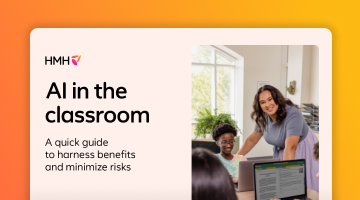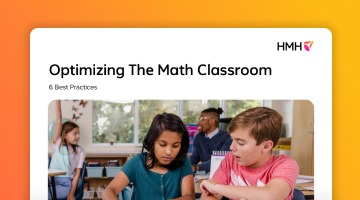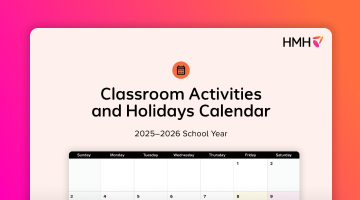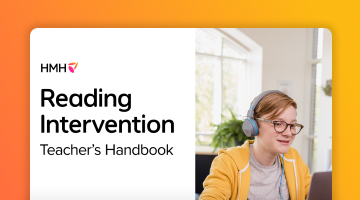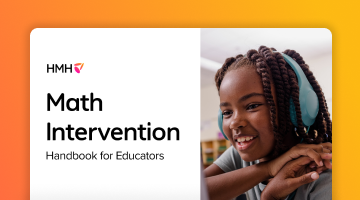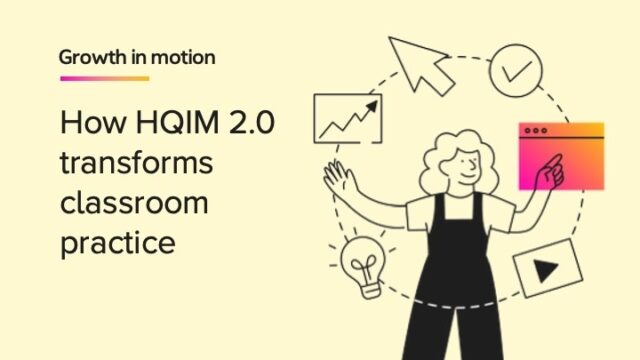
Are you interested in using MTSS to support students in your school or district? Wondering how RTI and PBIS work together within an MTSS framework?
We’ve compiled the ultimate guide to MTSS and tiered intervention. Below is everything you need to know about what MTSS involves, how it is designed, and what best practices to follow when adopting it at your school.
What is MTSS?
A multi-tiered system of support (MTSS) is a whole-student, preventative approach to providing the support necessary for success in schools. It uses regular screenings to identify areas of need early, giving targeted support to students based on those unique and varied needs.
MTSS is an umbrella framework that incorporates multiple evidence-based approaches to promote positive academic, social, behavioral, and emotional outcomes. The multi-tiered system of support framework varies based on the unique needs of each school using it, but it often includes two related frameworks:
- Positive Behavioral Interventions and Supports (PBIS)
- Response to Intervention (RTI)
PBIS tiers in MTSS
Positive Behavioral Interventions and Supports (PBIS) is a closely related framework to MTSS. This evidence-based tiered system of support promotes student success by teaching important behavioral skills. When practicing positive behaviors, students are more engaged in their learning and classroom disruptions occur less frequently.
RTI tiers in MTSS
Response to Intervention (RTI) is another multi-tiered system of support that is supported by extensive research. Whereas PBIS tiers focus on providing behavioral support in the classroom, RTI focuses on academic screening and intervention and can work in conjunction with MTSS using the same tier structure. Once students have been identified as needing additional academic help and the interventions are applied, RTI monitors progress to ensure that ongoing support is accurately targeted to students at their respective levels of need.
Read more about MTSS, PBIS, and RTI.
In recent years, many school districts have expanded their MTSS frameworks to explicitly address student mental health needs. Districts are increasingly recognizing mental health support as a distinct area requiring dedicated screening, intervention, and resources across all three tiers. This evolution reflects a growing understanding that academic and behavioral success can be tied to mental wellness.
MTSS examples by tier
Part of what makes MTSS so successful is its tiered approach to intervention. By screening students into different tiers, educators can allocate resources more intentionally to provide targeted interventions and optimize outcomes.
MTSS Tier 1 interventions: Universal supports
If you imagine the multi-tiered system of support model as a pyramid, Tier 1 would be the largest section at the base of the structure. This tier provides universal support to all students through core classroom instruction. While students may receive additional Tier 2 or Tier 3 interventions when needed, they continue to receive Tier 1 instruction, too. Ideally, universal supports at Tier 1 help most students succeed, minimizing how many students require the more targeted resources in Tiers 2 and 3.
MTSS Tier 1 intervention examples
- High-quality, evidence-based curriculum and instruction
- Teaching critical skills (behavioral, social, academic) to promote success
- School-wide behavioral expectations as part of a PBIS plan
MTSS Tier 2 interventions: Targeted supports
Tier 2 in MTSS is to support students who aren’t yet responding to Tier 1 core instruction. This tier also provides targeted support to students who need additional support in a particular area. Tier 2 supports are directed to the specific need of that student, so Tier 2 interventions might be applied in science learning, for example, while the student remains in Tier 1 for math and behavioral goals.
The tier distinctions are also flexible and require regular progress monitoring. It’s possible that a student responds favorably to their Tier 2 support and can return to Tier 1 and remain successful with universal core instruction.
MTSS Tier 2 intervention examples
- Small-group instruction
- Additional opportunities to practice a skill
- Extra learning time on a specific topic
- Increased teacher feedback
- Increased pre-instruction to promote desired outcomes
MTSS Tier 3 interventions: Intensive supports
For students not responding to Tier 2 interventions, Tier 3 is a more intensive form of support. Students in this tier often have chronic or ongoing needs and might also have learning differences or behavioral diagnoses. They aren’t responding to the small-group interventions in Tier 2 and require intensive support to be successful.
MTSS Tier 3 intervention examples
- One-on-one support with a school counselor, instructional specialist, or other school support specialist
- Behavioral Intervention Plan (BIP) or Individualized Education Program (IEP)
- Support from professionals within the community
How to implement MTSS at your school or district
Using a multi-tiered system of support for your school or district is a valuable step toward greater student success. Here is what you need to get started.
Identify your MTSS goals
The first step in your MTSS planning process is to identify two to four key goals. What do you hope to accomplish with an MTSS framework? What particular skills or outcomes do you want to promote?
When identifying your goals, it’s important to assess where you currently stand. What data do you already have on hand, and what can it tell you about your school? Do you know where students struggle either academically or behaviorally? What are the general strengths and weaknesses in the school right now? Assessing your current environment will help guide you when identifying areas for improvement with an MTSS plan.
Ensure teacher buy-in
This is a great opportunity to promote teacher buy-in by inviting teachers to collaborate in the planning stages. They’ll have valuable insights into issues and needs at the classroom level and are critical partners for the successful adoption of your future MTSS program. Their input can help direct your goals and apply resources to wherever they’ll make the most impact.
Develop an MTSS plan
There are a few additional questions that you need to ask before you decide how you’ll use a multi-tiered system of support. A variety of approaches to MTSS exist depending on the needs of your school or district.
When developing an MTSS plan, it’s important to ask:
- How will you encourage and recognize positive outcomes? Will you use a school store, reward system, or other means?
- What kind of professional learning do educators need to help implement the MTSS framework? How will you provide that support?
- How will you coordinate the implementation process across your school or district? How will you ensure uniform adoption?
- How will you track your data and monitor progress?
The above questions can guide you in selecting MTSS resources and tools that align with your school’s needs and capacity. Remember to follow evidence-based practices and regularly monitor progress so you can make data-driven decisions for your MTSS strategy.
Implement your multi-tiered system of support
One way you can set your MTSS framework up for success is through periodic assessments throughout the school year. Three or four times during the year, use universal screenings to identify at-risk students who need additional support beyond Tier 1. Regular screenings allow you to properly assess student needs, ensuring that you provide focused support and resources to optimize outcomes.
Support your teachers in adopting MTSS
Be sure to provide training, toolkits, and additional support for your teachers and staff before and during the implementation for successful program adoption.
Follow the data
When following an MTSS framework, always make data-based decisions. Data will inform what changes you make to your program, how to allocate your resources, and how to best support student success. Regular progress monitoring ensures that a specific student intervention or plan is working. It also confirms that the student is responding to the intervention and can move down to a lower tier of support, or it highlights that a plan is not working and needs adjustments. Reviewing data is an ongoing process that lasts throughout the lifecycle of your MTSS framework.
Conclusion
The advantages of developing a multi-tiered system of support continue to drive a growing number of schools to adopt their own MTSS frameworks. Hopefully, the information and tips shared in this blog post can help you understand more about what encompasses MTSS tiered interventions and how you can create a program that benefits your students.
This article was adapted from a blog post initially developed by the education technology company Classcraft, which was acquired by HMH in 2023. The views expressed in this article are those of the author and do not necessarily represent those of HMH.
***
Take your MTSS approach to the next level. Learn how to design inclusive, tiered supports in our latest webinar, MTSS in Action: Designing Inclusive Instruction for Tiered Support.
Find more lesson plans and classroom resources on Shaped.
Be the first to read the latest from Shaped.

